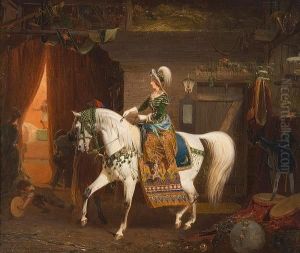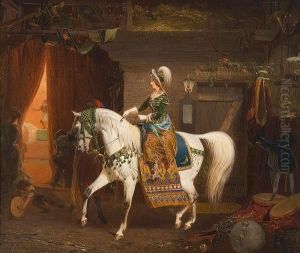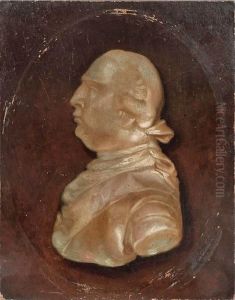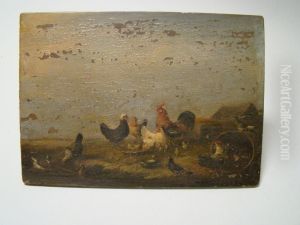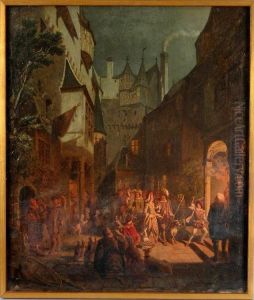Eduard Handwerck Paintings
Eduard Handwerck does not have a widely recognized biography as an artist in the traditional sense within the realms of painting, sculpture, or similar artistic endeavors. Instead, the name is most notably associated with the production of dolls during the late 19th and early 20th centuries in Germany. The Handwerck doll manufacturing enterprise was known for creating high-quality, bisque porcelain dolls that were highly valued by collectors and children alike during that period. These dolls were noted for their realistic glass eyes, finely painted features, and articulated bodies made of composition or wood. They often came dressed in elaborate and fashionable costumes reflecting the styles of the time.
The Handwerck company was part of the flourishing German doll industry centered in the Thuringia region, which was a hub for toy and doll manufacturing due to its skilled labor force and the availability of natural resources like wood and clay. German dollmakers like Handwerck were renowned for their craftsmanship and were significant players in the global toy market until the onset of World War I, which disrupted production and exportation.
Eduard Handwerck’s contributions to the doll-making industry are remembered for the quality and beauty of his dolls, which continue to be sought after by collectors today. While specific dates of birth and death for Eduard Handwerck might not be well-documented in public records, his legacy lives on through the dolls that bear his name and the lasting impact he had on the craftsmanship and aesthetic standards of doll manufacturing. The precise details of his life and operations, including the founding and eventual closure of his business, are less commonly known, reflecting the broader historical tendency to focus more on the products of such industries rather than the individual lives of their creators. Nevertheless, Handwerck’s work remains a significant part of the history of toys and collectibles, illustrating the rich heritage of German craftsmanship in the late 19th and early 20th centuries.
